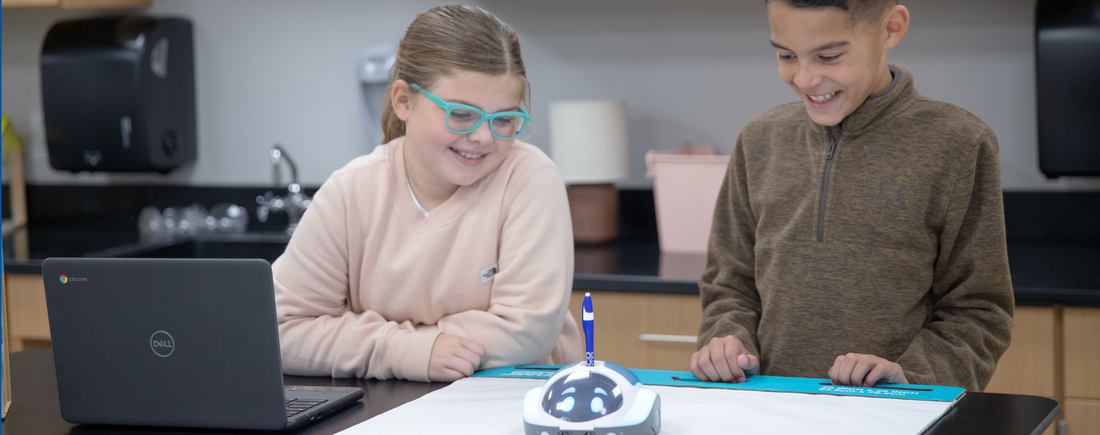From steam engines to smartphones, hydraulics to AI – every major leap forward has one thing in common: curiosity and a drive to make life better.
Now, as we dive headfirst into the Fourth Industrial Revolution – where humans, machines, and digital tools work side by side – our role isn’t disappearing, it’s evolving. Drones are flying into rescue missions, robots are lending a hand in operating rooms, and AI is taking over the routine, repetitive stuff. But all of that tech still needs one thing: people who know how to think, solve, and lead.
That’s where STEM and STEAM classrooms come in. These hands-on learning environments help students build not just technical know-how, but the creativity, teamwork, and problem-solving skills they’ll need to shape whatever the future looks like. Because no matter how the world changes, we’ll always need thinkers, builders, and leaders ready to take it on.

The New Face of Readiness
Change makes a lot of people nervous – especially when it comes to jobs. It’s easy to worry that new technology will replace human workers or make certain roles disappear. But history tells a different story: every major shift has also created new opportunities. The same tools people once feared have ended up shaping entire industries.
The World Economic Forum estimates that while 75 million jobs could be lost to automation, another 133 million will be created. That’s not the end of the workforce – it’s a turning point. And as things continue to shift, technical know-how matters – but so do the human skills that machines can’t replicate. Things like communication, problem-solving, and collaboration are becoming just as essential as coding or engineering.
That’s why STEM and STEAM education is so important. These classrooms give students space to work together, tackle real challenges, and learn how to think on their feet. And thanks to growing partnerships between schools, businesses, and industry leaders, students are getting access to real-world tools, mentors, and experiences that make learning feel more connected to life outside the classroom. It’s setting them up to move between roles, adapt to new demands, and lead in the jobs of tomorrow.

Soft Skills Fuel Future Careers
Being able to design a solution and 3D print it on the spot says a lot about how far technology has come. But without creativity behind it, that printer’s just a machine. The more STEM shapes the way we work and live, the more we need the soft skills that bring it all together.
Skills like communication, collaboration, and critical thinking aren’t just helpful – they’re essential. And students build them naturally through hands-on, project-based learning. Picture a group working together to build a functioning wind turbine. They have to brainstorm, problem-solve, communicate clearly, and fine-tune their design to maximize energy output – that’s real-world teamwork in action.
STEM and STEAM programs don’t just teach students how to solve problems – they show them how to do it together. That combination of technical and interpersonal skills helps shape confident, capable learners who are ready to lead in any career path they choose.

From the Classroom to Confidence
Great teachers know that what happens in the classroom should stick with students long after the lesson ends. It’s not just about grades – it’s about helping students see what they’re capable of and building the kind of confidence that carries into the rest of their lives. When students start to believe in their own potential, the future doesn’t just feel possible – it feels like something they can shape.
STEM and STEAM activities help build that kind of self-belief. Whether it’s figuring out how to lead a team or when to step back and listen, students learn soft skills like self-management, reflection, and decision-making by working through hands-on challenges. And for students who haven’t always seen themselves represented in STEM – especially girls and students of color – these experiences matter. When they’re part of a team, solving problems, and seeing their ideas make a difference, they start to see themselves differently too. They begin to realize they belong here – and that STEM careers are well within reach.

Shaping Whole Humans, Not Just Workers
STEM and STEAM classrooms aren’t just about developing job skills – they’re about helping students learn how to work with others, think for themselves, and show up as leaders in whatever path they choose. Technical know-how matters – but so do empathy, communication, and confidence. Those things last longer than any tool or trend.
Pitsco’s been supporting that kind of growth for decades. By giving educators hands-on ways to teach both the hard skills and the human ones, we’re helping build classrooms that don’t just prep kids for work – they prepare them for life.
Explore our catalog or connect with an Education Advisor to create a custom solution for your school or district.

